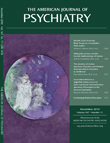Association Between a High-Risk Autism Locus on 5p14 and Social Communication Spectrum Phenotypes in the General Population
Abstract
Objective:
Recent genome-wide analysis identified a genetic variant on 5p14.1 (rs4307059), which is associated with risk for autism spectrum disorder. This study investigated whether rs4307059 also operates as a quantitative trait locus underlying a broader autism phenotype in the general population, focusing specifically on the social communication aspect of the spectrum.
Method:
Study participants were 7,313 children from the Avon Longitudinal Study of Parents and Children. Single-trait and joint-trait genotype associations were investigated for 29 measures related to language and communication, verbal intelligence, social interaction, and behavioral adjustment, assessed between ages 3 and 12 years. Analyses were performed in one-sided or directed mode and adjusted for multiple testing, trait interrelatedness, and random genotype dropout.
Results:
Single phenotype analyses showed that an increased load of rs4307059 risk allele is associated with stereotyped conversation and lower pragmatic communication skills, as measured by the Children's Communication Checklist (at a mean age of 9.7 years). In addition a trend toward a higher frequency of identification of special educational needs (at a mean age of 11.8 years) was observed. Variation at rs4307059 was also associated with the phenotypic profile of studied traits. This joint signal was fully explained neither by single-trait associations nor by overall behavioral adjustment problems but suggested a combined effect, which manifested through multiple sub-threshold social, communicative, and cognitive impairments.
Conclusions:
Our results suggest that common variation at 5p14.1 is associated with social communication spectrum phenotypes in the general population and support the role of rs4307059 as a quantitative trait locus for autism spectrum disorder.



